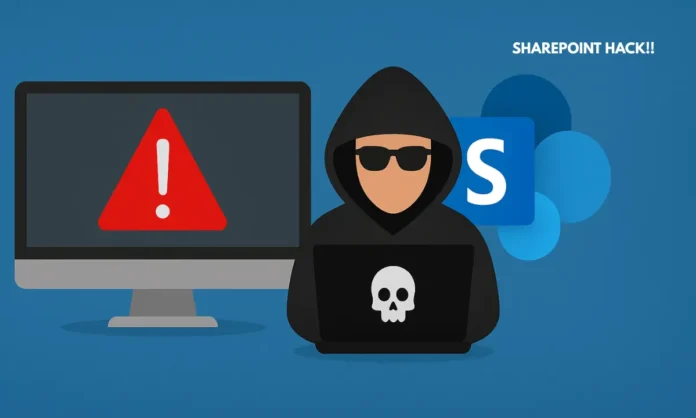Summary
- A critical vulnerability in Microsoft SharePoint is being actively exploited, targeting on-premises servers worldwide.
- Cybersecurity experts warn of data theft, password harvesting, and persistent backdoor installations.
- Microsoft has released urgent security patches for SharePoint Server 2016 and 2019, but the attack scope remains under investigation.
Escalating Cyber Threat to Microsoft SharePoint Users
Microsoft has issued an urgent security alert after confirming “active attacks” exploiting a severe vulnerability in its SharePoint collaboration software. The flaw allows unauthenticated attackers full access to SharePoint content and the ability to execute code remotely, according to the Cybersecurity and Infrastructure Security Agency (CISA). The threat primarily targets on-premises SharePoint servers, with Microsoft 365 cloud users reportedly unaffected.
CISA emphasized that the attacks pose a “significant risk to organizations,” as SharePoint is widely deployed by businesses and government agencies for secure document storage and collaboration. The agency is currently assessing the full scope of the breach but has urged all affected entities to apply Microsoft’s latest patches without delay.
🚨BREAKING: MICROSOFT HIT BY MASSIVE CYBERATTACK – STATE SECRETS, CRYPTO KEYS, AND GOVT DOCS STOLEN
— HustleBitch (@HustleBitch_) July 21, 2025
Hackers tore into SharePoint and nuked the vault ripping through U.S. agencies, EU servers, and global telecoms.
They stole everything… then vanished.
Thousands still haven’t… pic.twitter.com/tcRvFMUEoE
Researchers Warn of Data Exfiltration and Backdoor Installs
- Palo Alto Networks’ Unit 42 researchers confirmed the exploit is already “in-the-wild,” compromising thousands of organizations globally.
- European cybersecurity firm Eye Security highlighted that attackers can impersonate users or services even after patches are applied, raising concerns about lingering footholds.
- Experts say SharePoint’s integration with Microsoft Outlook and Teams could accelerate data theft and credential harvesting once attackers gain initial access.
Michael Sikorski, CTO of Palo Alto Unit 42, warned that attackers are not only stealing sensitive data but also deploying persistent backdoors and extracting cryptographic keys. This escalation underscores the advanced capabilities of the threat actors involved, hinting at coordinated, large-scale operations.
Microsoft’s Response and Global Impact
- Microsoft released emergency fixes for SharePoint Server 2016 and 2019, with advisories urging rapid deployment of the patches.
- A company spokesperson declined to elaborate beyond an official blog post but reaffirmed that cloud-based Microsoft 365 users are unaffected.
- Security agencies worldwide have begun issuing parallel warnings, as organizations scramble to secure their collaboration tools.
The breach highlights persistent challenges with legacy and on-premises IT infrastructure. While cloud systems often receive automatic security updates, on-premises solutions depend on organizations applying patches swiftly — a step that many firms delay, leaving critical vulnerabilities exposed.
The Bigger Cybersecurity Picture
The SharePoint attack coincides with other tech disruptions, including a three-hour IT outage reported by Alaska Airlines, though it remains unclear if the incidents are related. Analysts warn that the breach may have long-term consequences, as compromised SharePoint servers could become staging points for larger-scale corporate espionage or ransomware attacks.
The urgency is compounded by Microsoft’s dominant presence in enterprise collaboration, meaning a successful attack on its software could ripple across multiple industries simultaneously. With growing geopolitical tensions and sophisticated state-backed hacking groups, incidents like these highlight the need for proactive patch management, regular penetration testing, and zero-trust architectures.
Final Verdict: A Wake-Up Call for On-Premises Security
This SharePoint vulnerability is more than just a software flaw; it underscores the fragility of outdated on-premises systems in the modern cyber landscape. Organizations that fail to patch promptly risk cascading breaches across their networks. As attackers leverage stolen keys and backdoors, the clean-up will require far more than quick fixes — it calls for structural cybersecurity overhauls and a transition toward more secure, cloud-native ecosystems.


